N121adserv ads (virus) - Sep 2016 update
n121adserv ads Removal Guide
What is n121adserv ads?
N121adserv is the potentially unwanted program that triggers random commercial content
N121adserv is an advertising platform that is NOT a virus. However, ads that it causes can not be treated as harmless because they belong to third parties that are interested in increasing their visitors' traffic and sales. Beware that you can never be sure about the safety of these ads because the publisher does not take any responsibility for the safety of its ads. So, we highly recommend ignoring them and also avoiding websites that they try to redirect you to. The unstoppable appearance of ads and constant redirects can also explain one little thing – why did people start using the virus term.
| Name | n121adserv ads |
|---|---|
| Type | Adware, potentially unwanted program |
| Symptoms | Advertising content gets delivered to random sites, the screen gets filled with banners, pop-ups, links to commercial sites |
| Danger | Material online can be related to questionable third-parties and malware distributing services |
| Spreading methods | Freeware installations when users kip through steps that are hiding pre-bundled programs |
| Elimination | Rely on anti-malware tools and clear the machine fully |
| Repair | If you think that you need to remove virus damage, run FortectIntego |
If you are one of those who have noticed ads by this service on your web browser, you should think about your recent downloads. Most probably, you have installed an adware-type program in a bundle with some download manager, PDF creator, video streaming software, and similar program.
Such adware is compatible with the most popular web browsers, including Google Chrome, Mozilla Firefox, or Internet Explorer. If you want to get rid of intrusive ads, you have to remove this potentially unwanted program. The easiest way to find it is to run a full system scan with SpyHunter 5Combo Cleaner, Malwarebytes, or other reliable anti-spyware.
The most important thing related to n121adserv adware is its ability to track its users and collect non-personal information. Typically, this app is interested in your search terms, mostly visited websites, computer's IP address and locations, and similar information.
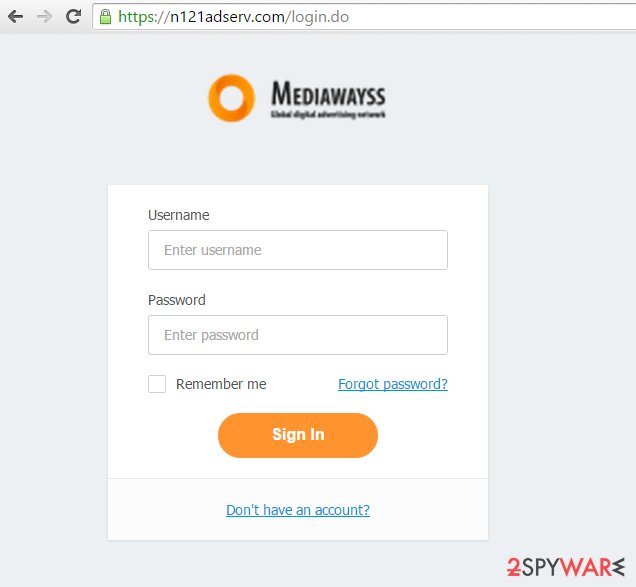
This data should be revealed with carefulness because wrong people can misuse it for their own needs. Therefore, you are strongly advised to remove the N121adserv virus from your computer. To be sure that each of its related components was eliminated, you should opt for the automatic removal option.
Programs that are listed down below will show you the real danger that is hiding on your computer. If you still believe that you are capable of performing a full malicious program removal on your computer manually, make sure you follow a step-by-step guide that was designed by the 2-spyware.com research team.
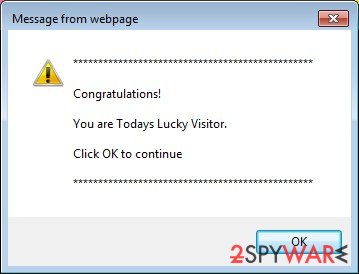
The adware spreads around and hijacks various computers
According to Google Safe Browsing diagnostic page, the advertising platform is not related to any malicious software and hasn't been detected spreading or featuring suspicious content within 90 days. However, here we speak about the website that can be accessed right on the Internet but not about an add-on that may settle down on users' computers right after installing another freeware.
Keeping the adware that was misused by third parties for displaying questionable ads is not recommended, so you should never let it stay on your machine. Besides, you should also take some precautionary measures in order to block the entrance of such and similar potentially unwanted programs to your computer.
Typically, such PUPs spread along with other freeware and shareware, you should always check what free software you are about to install to avoid the hijack, you should select Advanced or Custom installation mode and monitor each installation step carefully. This way, you will get the chance to see and deselect all 'optional downloads', so make sure that you take advantage of this opportunity.
Tips to help you remove the N121adserv virus
The appearance of intrusive ads can be stopped by removing an add-on that is related to this activity. Sometimes it can be detected without lots of effort. However, if you can't name yourself as an experienced PC user, you should not even think about manual n121adserv removal because there is a high possibility that you will terminate wrong processes in your Task Manager.
Also, you can crash your web browser and initiate other problems on your computer. To stay safe, we highly recommend opting for the automatic removal option while trying to remove the virus from the system. Programs that you can use are right here:
You may remove virus damage with a help of FortectIntego. SpyHunter 5Combo Cleaner and Malwarebytes are recommended to detect potentially unwanted programs and viruses with all their files and registry entries that are related to them.
Getting rid of n121adserv ads. Follow these steps
Uninstall from Windows
Instructions for Windows 10/8 machines:
- Enter Control Panel into Windows search box and hit Enter or click on the search result.
- Under Programs, select Uninstall a program.
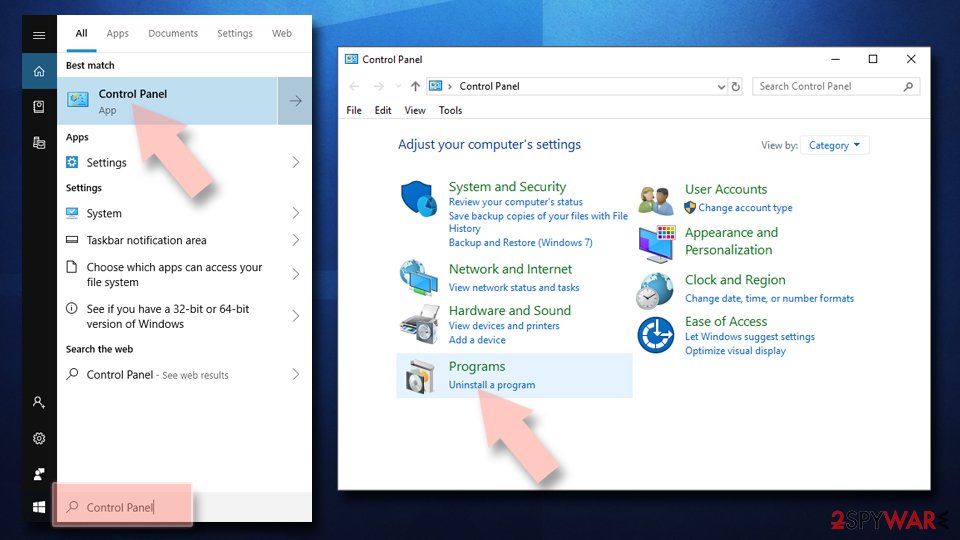
- From the list, find the entry of the suspicious program.
- Right-click on the application and select Uninstall.
- If User Account Control shows up, click Yes.
- Wait till uninstallation process is complete and click OK.
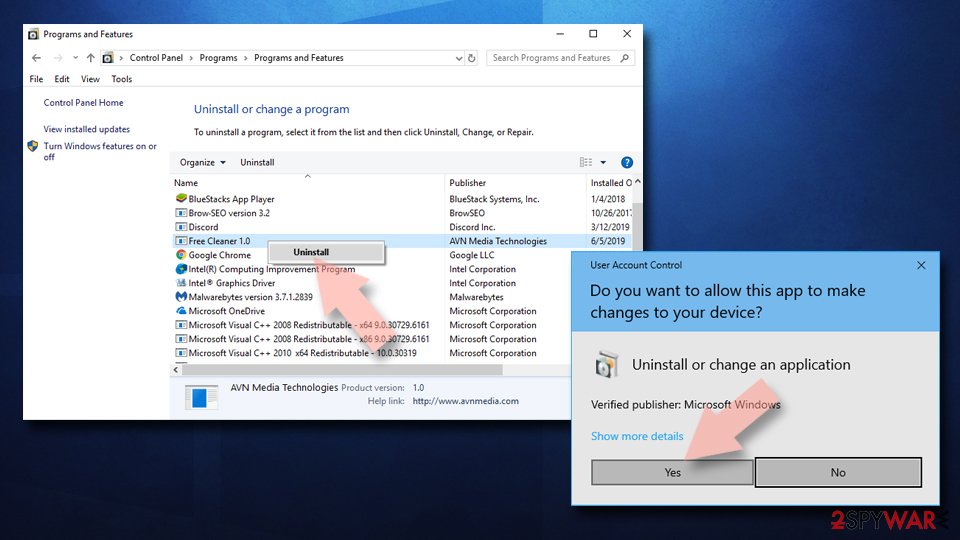
If you are Windows 7/XP user, proceed with the following instructions:
- Click on Windows Start > Control Panel located on the right pane (if you are Windows XP user, click on Add/Remove Programs).
- In Control Panel, select Programs > Uninstall a program.
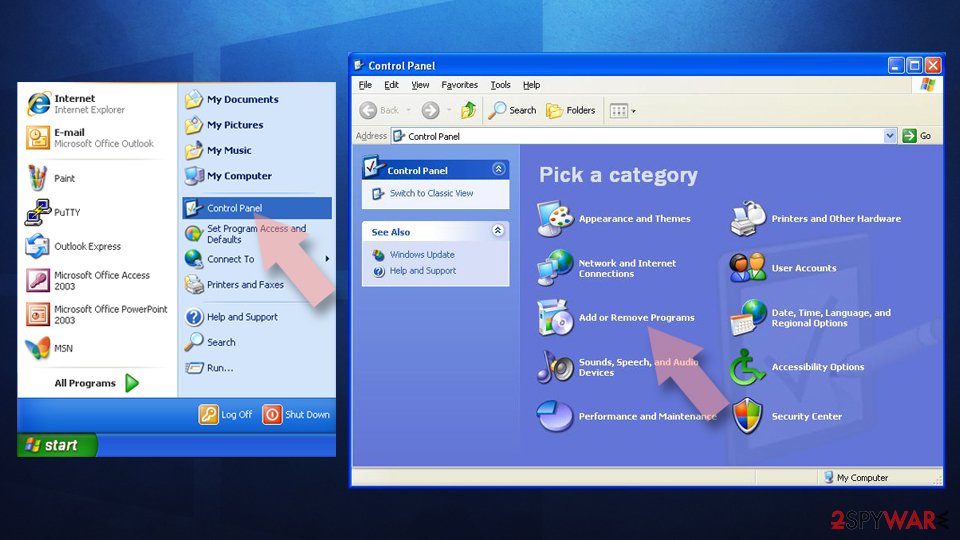
- Pick the unwanted application by clicking on it once.
- At the top, click Uninstall/Change.
- In the confirmation prompt, pick Yes.
- Click OK once the removal process is finished.
Delete from macOS
Remove items from Applications folder:
- From the menu bar, select Go > Applications.
- In the Applications folder, look for all related entries.
- Click on the app and drag it to Trash (or right-click and pick Move to Trash)
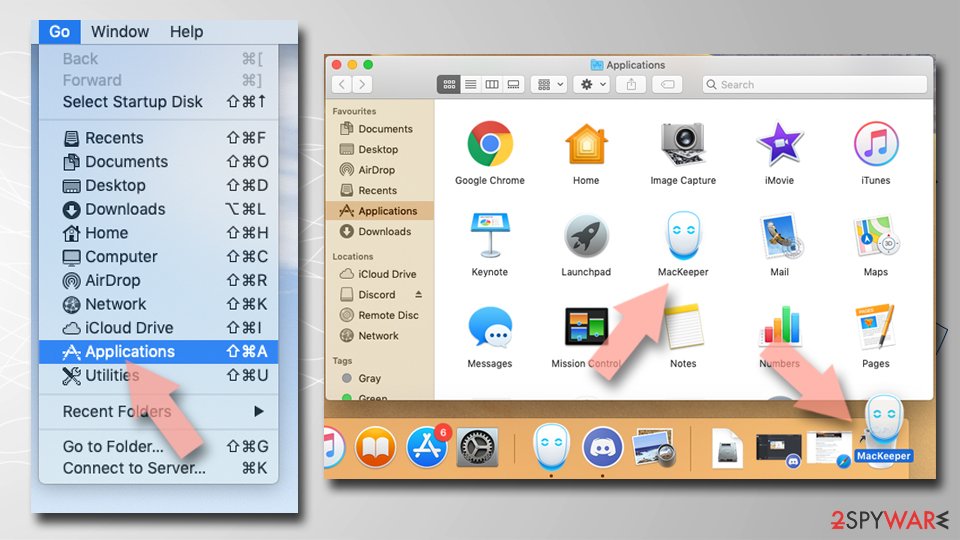
To fully remove an unwanted app, you need to access Application Support, LaunchAgents, and LaunchDaemons folders and delete relevant files:
- Select Go > Go to Folder.
- Enter /Library/Application Support and click Go or press Enter.
- In the Application Support folder, look for any dubious entries and then delete them.
- Now enter /Library/LaunchAgents and /Library/LaunchDaemons folders the same way and terminate all the related .plist files.
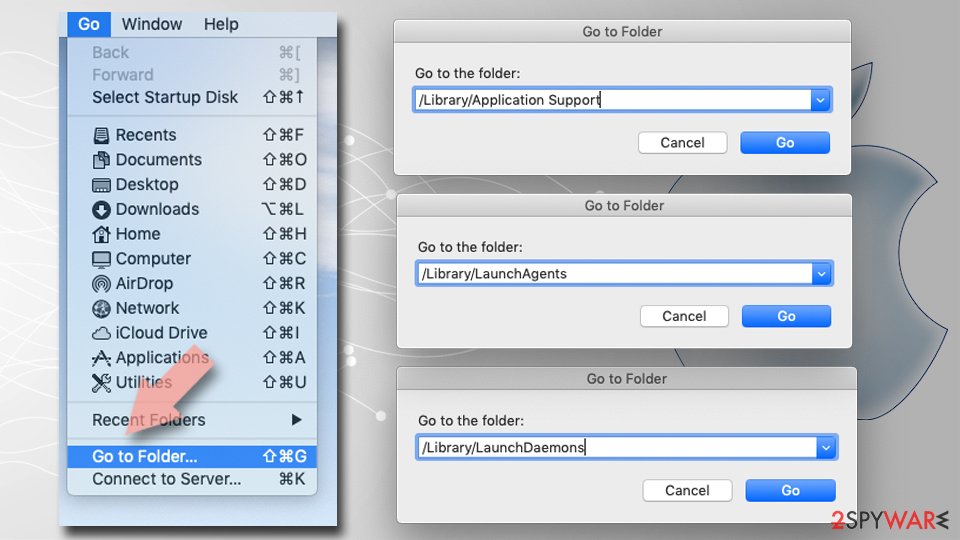
Remove from Microsoft Edge
Delete unwanted extensions from MS Edge:
- Select Menu (three horizontal dots at the top-right of the browser window) and pick Extensions.
- From the list, pick the extension and click on the Gear icon.
- Click on Uninstall at the bottom.
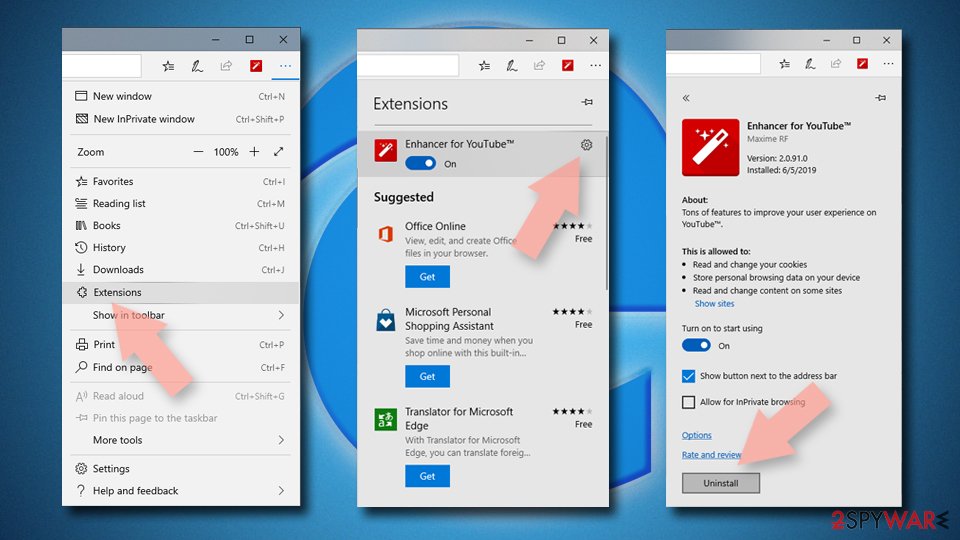
Clear cookies and other browser data:
- Click on the Menu (three horizontal dots at the top-right of the browser window) and select Privacy & security.
- Under Clear browsing data, pick Choose what to clear.
- Select everything (apart from passwords, although you might want to include Media licenses as well, if applicable) and click on Clear.
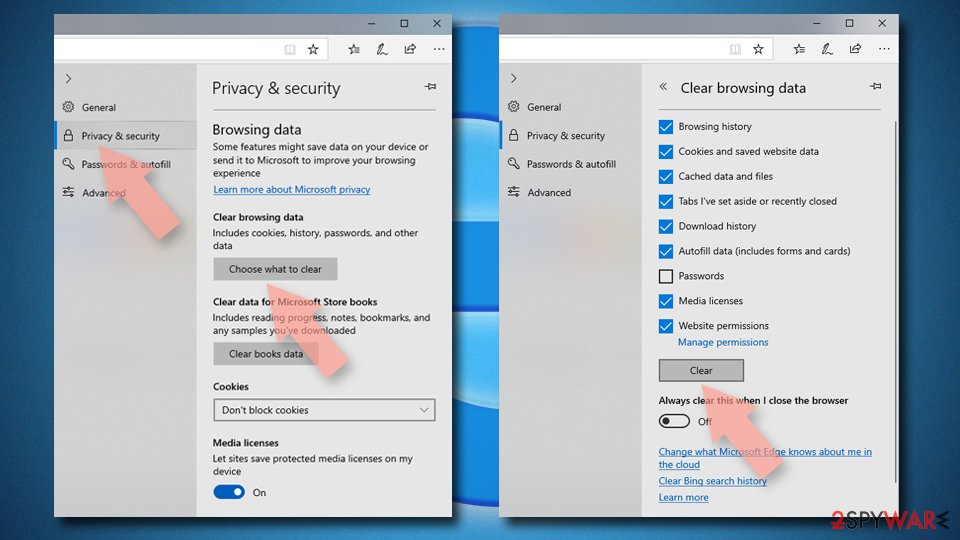
Restore new tab and homepage settings:
- Click the menu icon and choose Settings.
- Then find On startup section.
- Click Disable if you found any suspicious domain.
Reset MS Edge if the above steps did not work:
- Press on Ctrl + Shift + Esc to open Task Manager.
- Click on More details arrow at the bottom of the window.
- Select Details tab.
- Now scroll down and locate every entry with Microsoft Edge name in it. Right-click on each of them and select End Task to stop MS Edge from running.
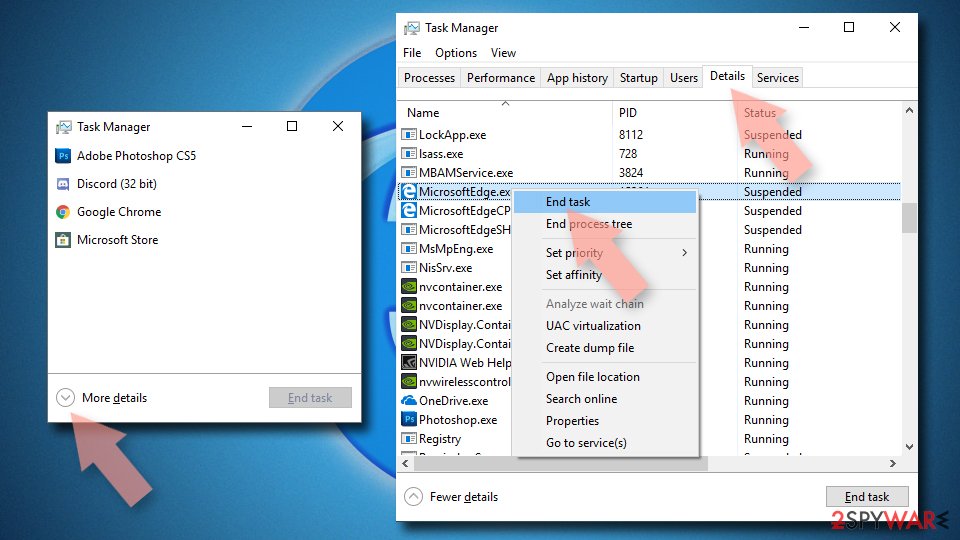
If this solution failed to help you, you need to use an advanced Edge reset method. Note that you need to backup your data before proceeding.
- Find the following folder on your computer: C:\\Users\\%username%\\AppData\\Local\\Packages\\Microsoft.MicrosoftEdge_8wekyb3d8bbwe.
- Press Ctrl + A on your keyboard to select all folders.
- Right-click on them and pick Delete
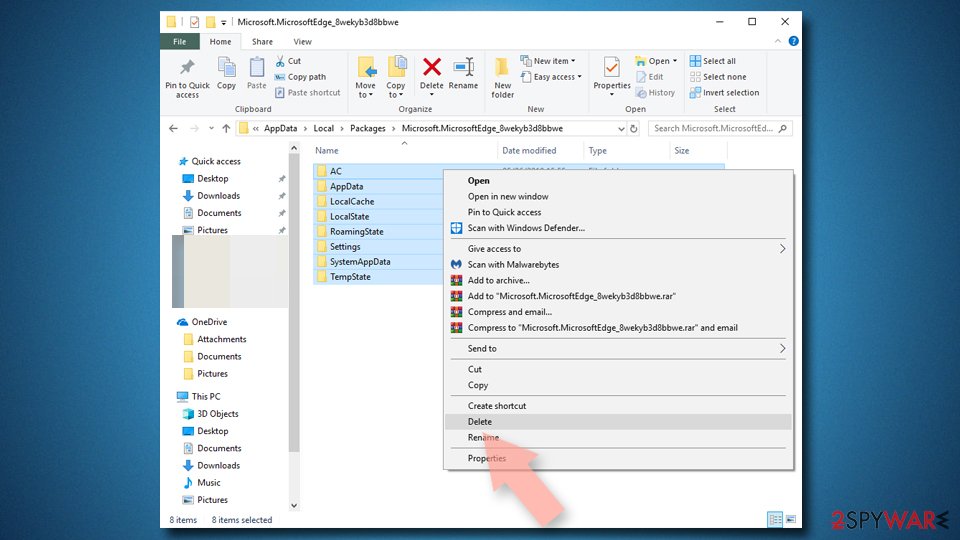
- Now right-click on the Start button and pick Windows PowerShell (Admin).
- When the new window opens, copy and paste the following command, and then press Enter:
Get-AppXPackage -AllUsers -Name Microsoft.MicrosoftEdge | Foreach {Add-AppxPackage -DisableDevelopmentMode -Register “$($_.InstallLocation)\\AppXManifest.xml” -Verbose
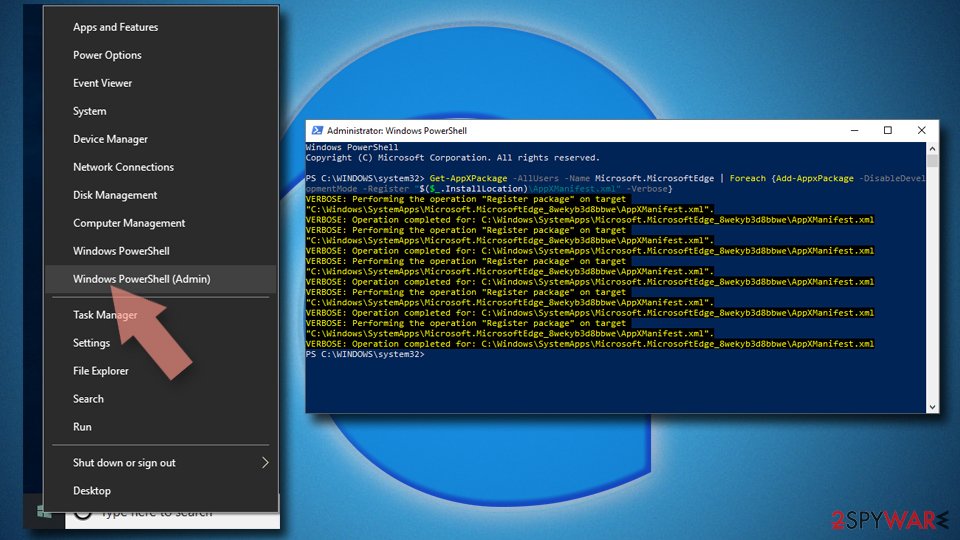
Instructions for Chromium-based Edge
Delete extensions from MS Edge (Chromium):
- Open Edge and click select Settings > Extensions.
- Delete unwanted extensions by clicking Remove.
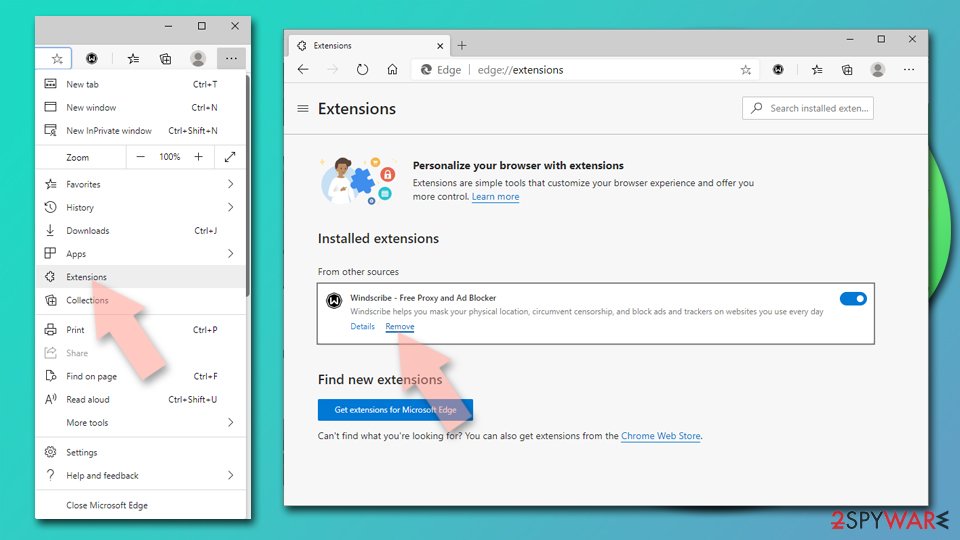
Clear cache and site data:
- Click on Menu and go to Settings.
- Select Privacy, search and services.
- Under Clear browsing data, pick Choose what to clear.
- Under Time range, pick All time.
- Select Clear now.
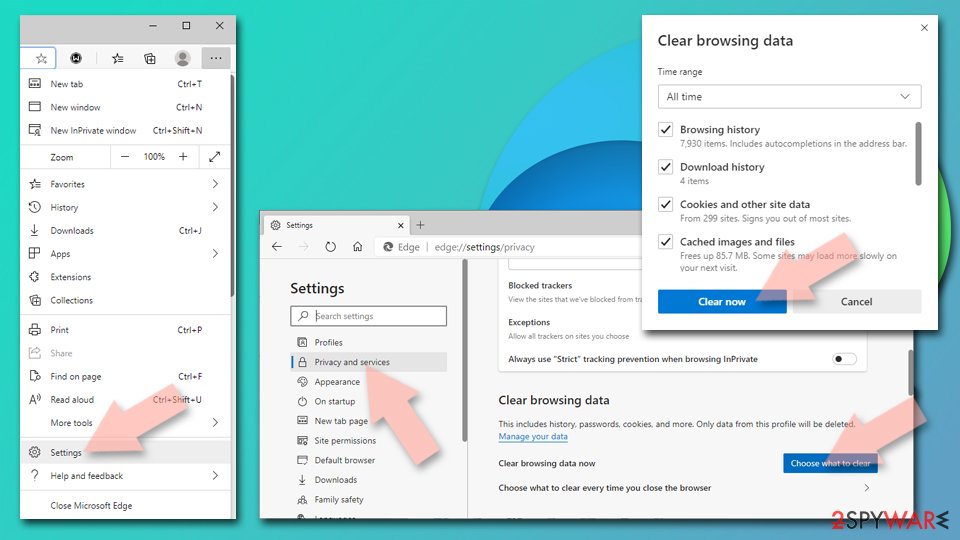
Reset Chromium-based MS Edge:
- Click on Menu and select Settings.
- On the left side, pick Reset settings.
- Select Restore settings to their default values.
- Confirm with Reset.
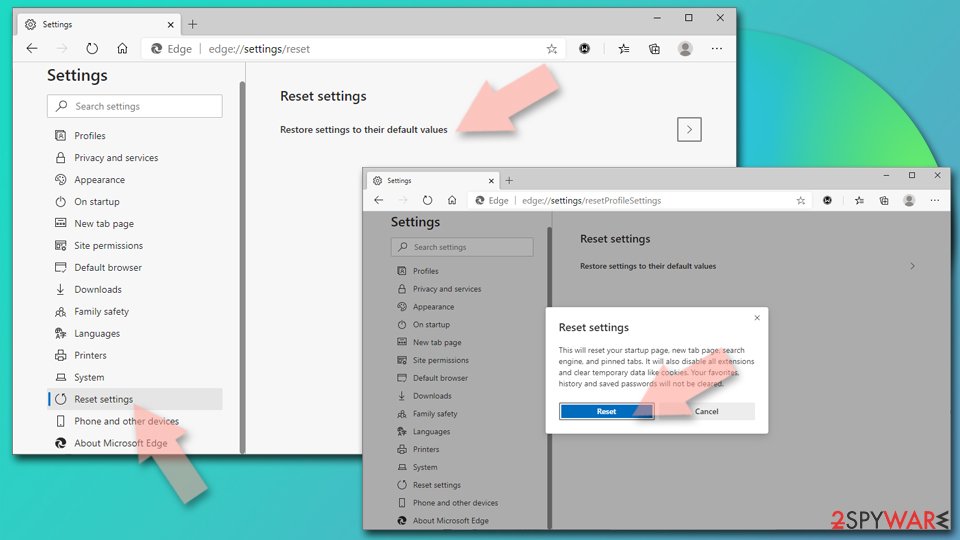
Remove from Mozilla Firefox (FF)
Remove dangerous extensions:
- Open Mozilla Firefox browser and click on the Menu (three horizontal lines at the top-right of the window).
- Select Add-ons.
- In here, select unwanted plugin and click Remove.
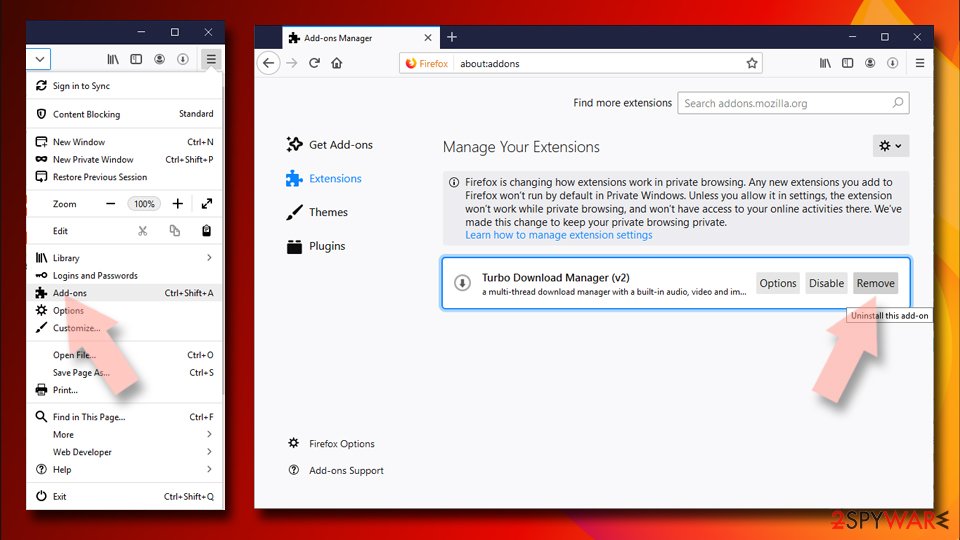
Reset the homepage:
- Click three horizontal lines at the top right corner to open the menu.
- Choose Options.
- Under Home options, enter your preferred site that will open every time you newly open the Mozilla Firefox.
Clear cookies and site data:
- Click Menu and pick Settings.
- Go to Privacy & Security section.
- Scroll down to locate Cookies and Site Data.
- Click on Clear Data…
- Select Cookies and Site Data, as well as Cached Web Content and press Clear.
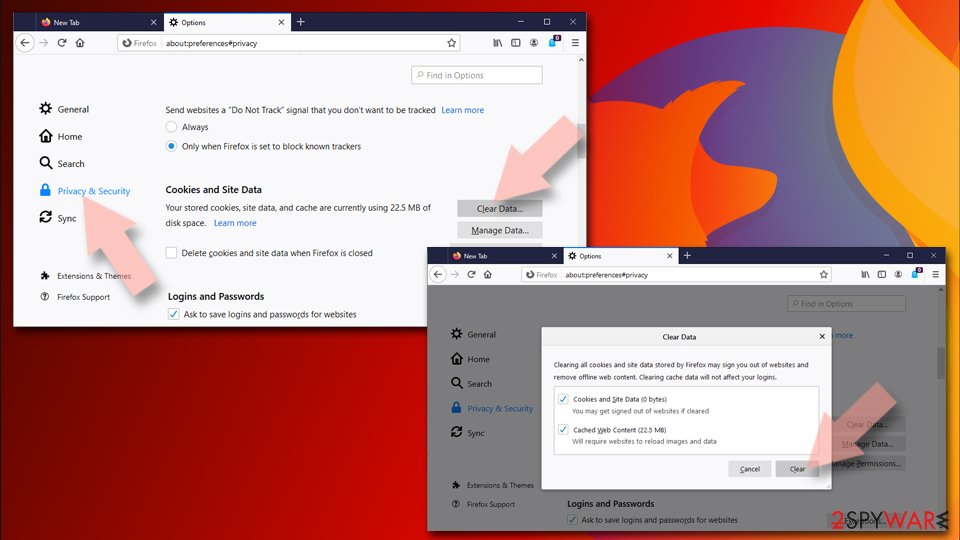
Reset Mozilla Firefox
If clearing the browser as explained above did not help, reset Mozilla Firefox:
- Open Mozilla Firefox browser and click the Menu.
- Go to Help and then choose Troubleshooting Information.
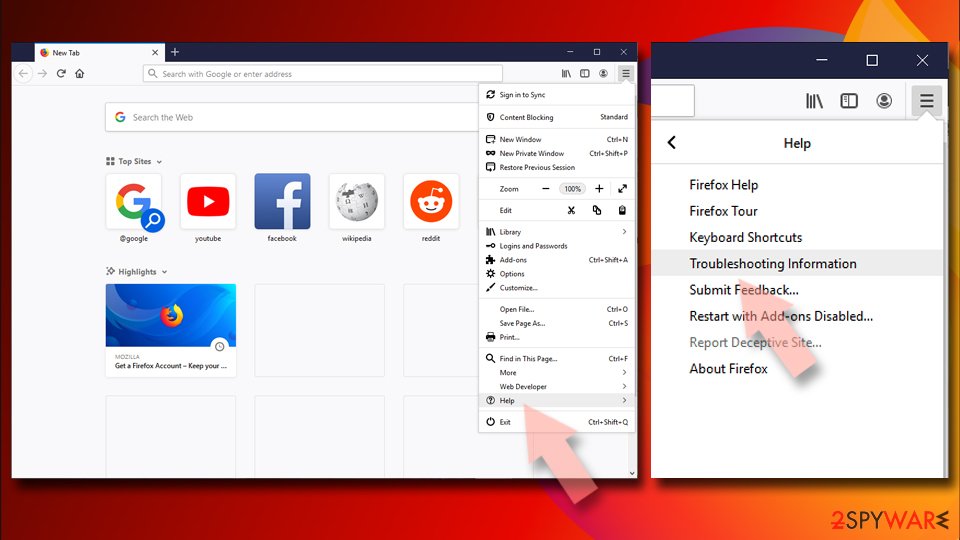
- Under Give Firefox a tune up section, click on Refresh Firefox…
- Once the pop-up shows up, confirm the action by pressing on Refresh Firefox.
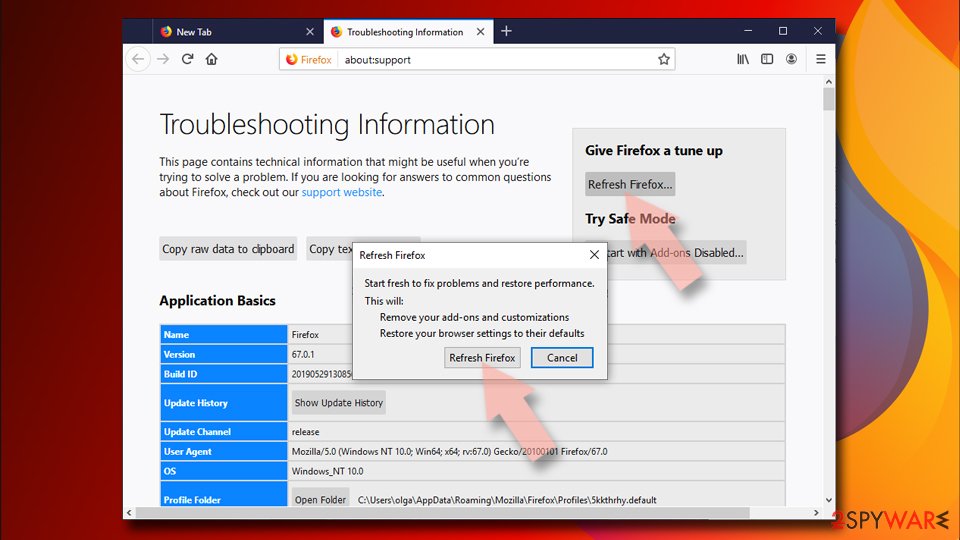
Remove from Google Chrome
Delete malicious extensions from Google Chrome:
- Open Google Chrome, click on the Menu (three vertical dots at the top-right corner) and select More tools > Extensions.
- In the newly opened window, you will see all the installed extensions. Uninstall all the suspicious plugins that might be related to the unwanted program by clicking Remove.
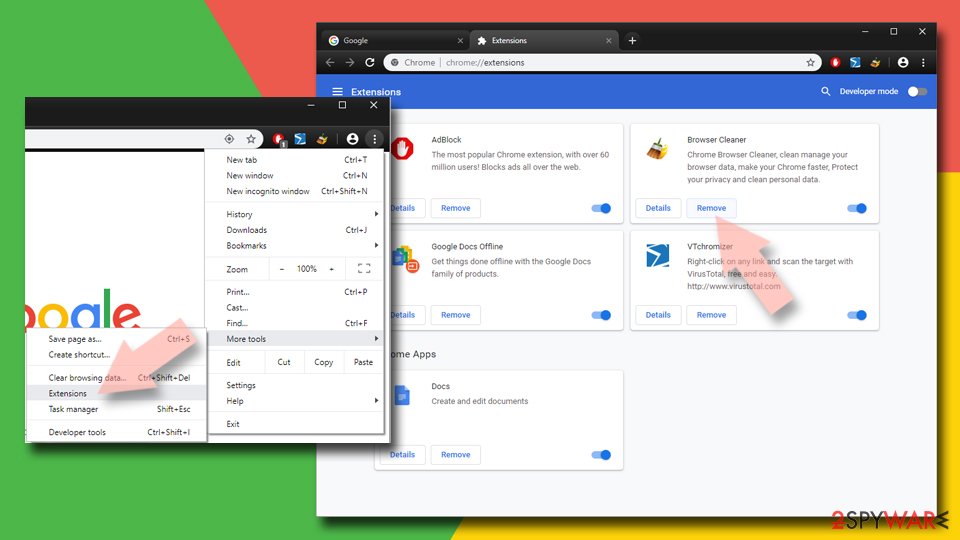
Clear cache and web data from Chrome:
- Click on Menu and pick Settings.
- Under Privacy and security, select Clear browsing data.
- Select Browsing history, Cookies and other site data, as well as Cached images and files.
- Click Clear data.
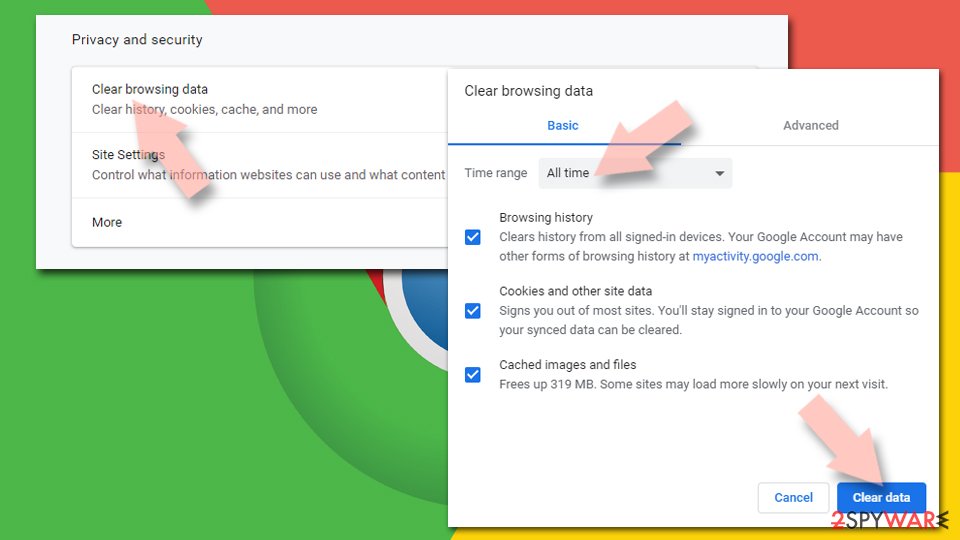
Change your homepage:
- Click menu and choose Settings.
- Look for a suspicious site in the On startup section.
- Click on Open a specific or set of pages and click on three dots to find the Remove option.
Reset Google Chrome:
If the previous methods did not help you, reset Google Chrome to eliminate all the unwanted components:
- Click on Menu and select Settings.
- In the Settings, scroll down and click Advanced.
- Scroll down and locate Reset and clean up section.
- Now click Restore settings to their original defaults.
- Confirm with Reset settings.
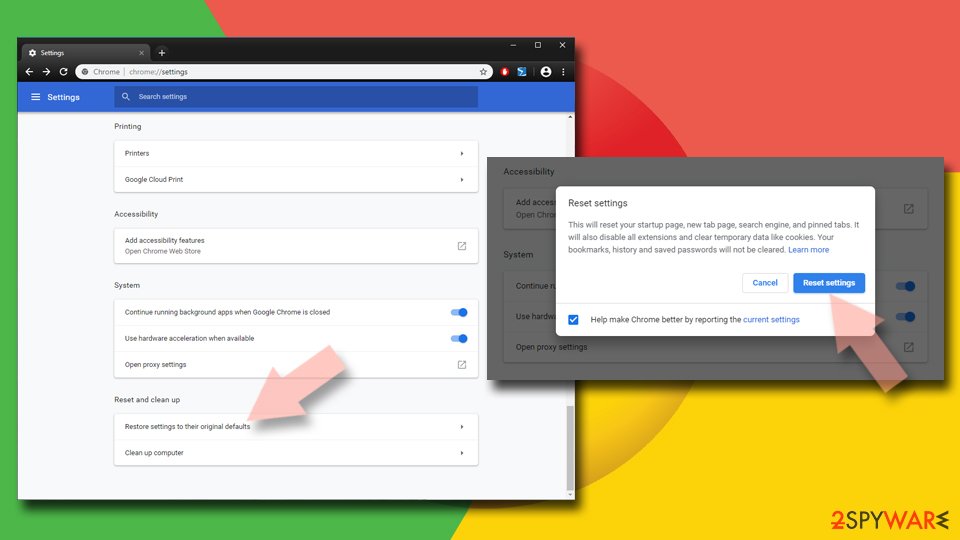
Delete from Safari
Remove unwanted extensions from Safari:
- Click Safari > Preferences…
- In the new window, pick Extensions.
- Select the unwanted extension and select Uninstall.
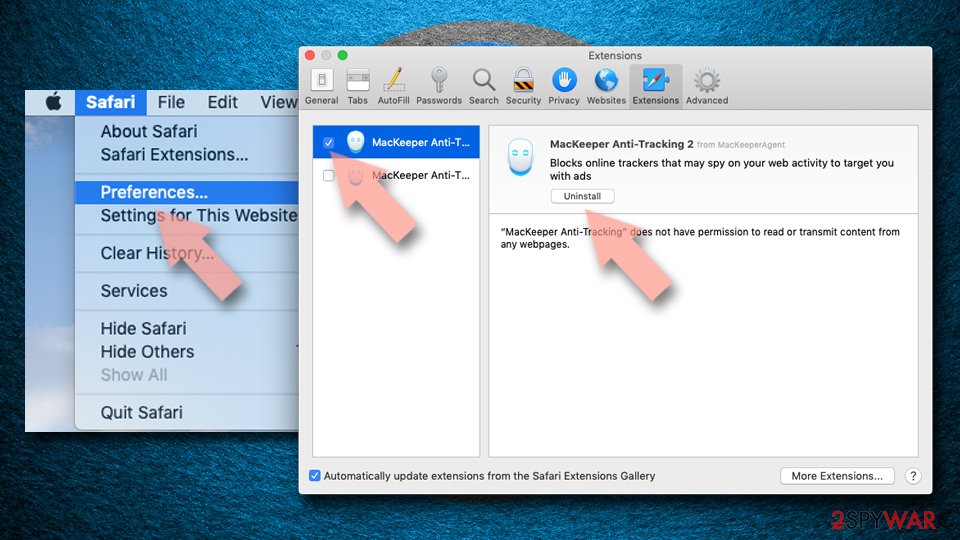
Clear cookies and other website data from Safari:
- Click Safari > Clear History…
- From the drop-down menu under Clear, pick all history.
- Confirm with Clear History.
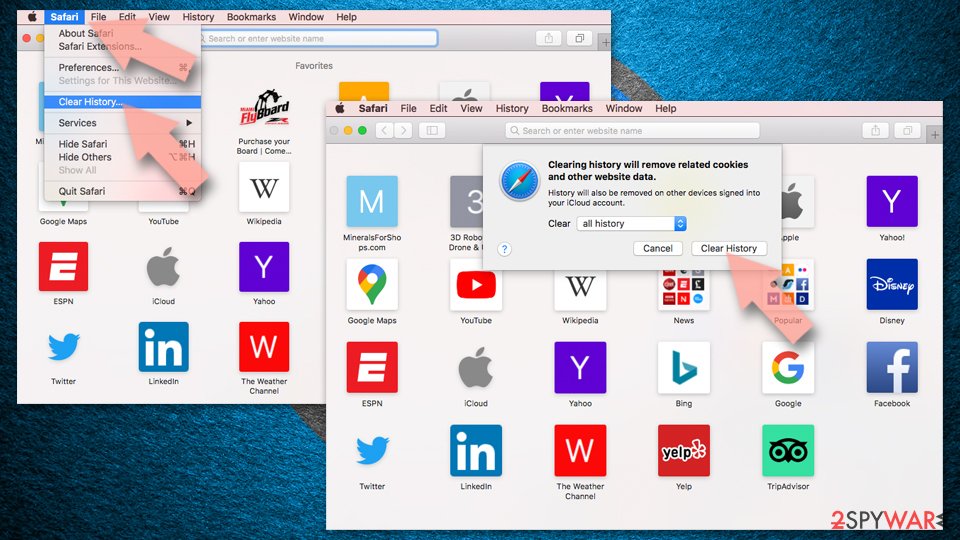
Reset Safari if the above-mentioned steps did not help you:
- Click Safari > Preferences…
- Go to Advanced tab.
- Tick the Show Develop menu in menu bar.
- From the menu bar, click Develop, and then select Empty Caches.
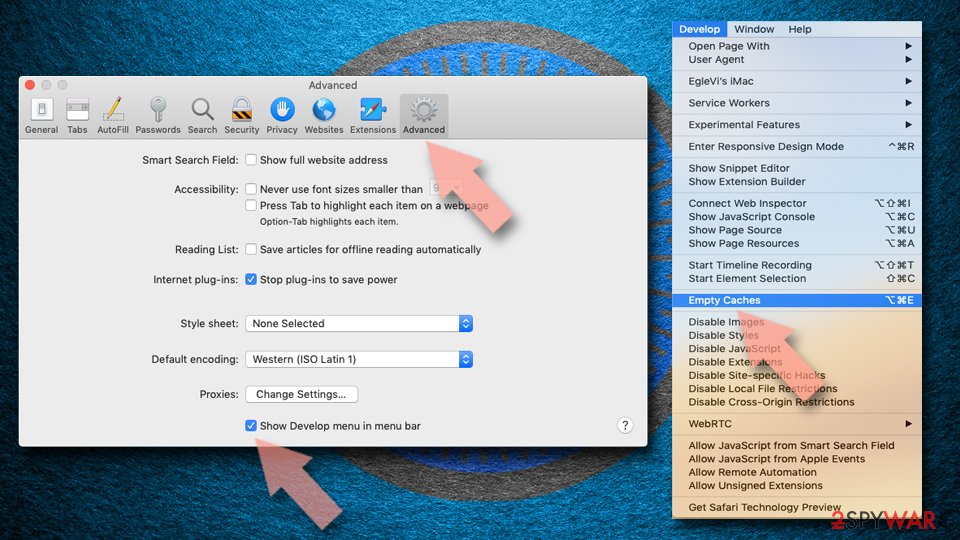
After uninstalling this potentially unwanted program (PUP) and fixing each of your web browsers, we recommend you to scan your PC system with a reputable anti-spyware. This will help you to get rid of n121adserv registry traces and will also identify related parasites or possible malware infections on your computer. For that you can use our top-rated malware remover: FortectIntego, SpyHunter 5Combo Cleaner or Malwarebytes.
How to prevent from getting adware
Protect your privacy – employ a VPN
There are several ways how to make your online time more private – you can access an incognito tab. However, there is no secret that even in this mode, you are tracked for advertising purposes. There is a way to add an extra layer of protection and create a completely anonymous web browsing practice with the help of Private Internet Access VPN. This software reroutes traffic through different servers, thus leaving your IP address and geolocation in disguise. Besides, it is based on a strict no-log policy, meaning that no data will be recorded, leaked, and available for both first and third parties. The combination of a secure web browser and Private Internet Access VPN will let you browse the Internet without a feeling of being spied or targeted by criminals.
No backups? No problem. Use a data recovery tool
If you wonder how data loss can occur, you should not look any further for answers – human errors, malware attacks, hardware failures, power cuts, natural disasters, or even simple negligence. In some cases, lost files are extremely important, and many straight out panic when such an unfortunate course of events happen. Due to this, you should always ensure that you prepare proper data backups on a regular basis.
If you were caught by surprise and did not have any backups to restore your files from, not everything is lost. Data Recovery Pro is one of the leading file recovery solutions you can find on the market – it is likely to restore even lost emails or data located on an external device.
